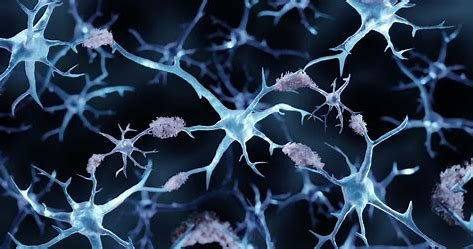Coya Therapeutics Demonstrates Promising CNS Anti-Inflammatory Effects of COYA 302 in Parkinson’s Disease Model
17 September 2024 | Tuesday | News

Image Source : Public Domain
A key aspect of Parkinson’s disease (PD) pathophysiology is decreased systemic regulatory T cell (Treg) function with associated neuroinflammation in the nigrostriatal pathway of the brain, including the presence of reactive astrocytes and microglia that have an initiating and progressing role in PD;
Subcutaneous injection of COYA 302, an anti-inflammatory, Treg-enhancing combination biologic (comprising low dose interleukin-2 and CTLA-4 Ig fusion protein), in an inflammatory mouse model of PD resulted in significant reductions in microglia and astrocyte activation in the nigrostriatal pathway in the brain;
Importantly, study illustrates that peripheral administration of COYA 302 is directly immunomodulatory in the brain and associated with significant downregulation of neuroinflammation
Coya’s Chief Business Officer and incoming Chief Executive Officer Arun Swaminathan, Ph.D. stated: “We believe that the ability of peripherally administered biologics (COYA 302) that potently and directly ameliorate the inflammatory milieu in the brain translates to strategies to suppress CNS neuro-inflammation beyond PD, including other inflammatory mediated neurodegenerative diseases such as Alzheimer’s disease (AD) and Frontotemporal Dementia (FTD).”
Parkinson’s disease is characterized by the selective loss of dopaminergic neurons in brain regions responsible for motor control (nigrostriatal pathway), while inflammation and immune dysfunction from the associated loss of systemic Treg function are currently recognized as critical mediators of disease and subsequent progression of PD. Targeting the sustained proinflammatory mechanisms that progress the disease and enhance immunosuppressive cells, such as Tregs, may have the potential to provide disease-modifying benefits in patients with PD.
In an inflammatory mouse model of PD, subcutaneous injections of COYA 302 significantly reduced inflammation and microglial activation in nigrostriatal brain regions responsible for motor control (dorsal striatum and substantia nigra). Microglial activation is an important mediator of PD and plays an important role in PD pathology and neurodegeneration. Microglial inhibition may hold promise as a therapeutic strategy to delay the progression of PD. Additionally, subcutaneous injections of COYA 302 resulted in reductions in astrocyte numbers and their activation (astrogliosis) in the nigrostriatal pathway. It is known that pathogenic astrocyte activation leads to neurodegeneration in PD, and mitigating its damage may be another therapeutic target. COYA 302’s direct effect in reducing neuroinflammatory constituents known to drive neurodegeneration is promising and warrants clinical translation into additional preclinical models and, ultimately, into patients. The Company anticipates presenting and/or publishing these data in a peer reviewing setting.
Parkinson’s disease (PD) is the most common movement disorder and the second most common neurodegenerative disease, affecting approximately 1% of individuals over the age of 60. Its prevalence increases significantly with age, and as the global population continues to age, the incidence of PD is expected to rise further. The hallmark of PD is the progressive degeneration of dopaminergic neurons, particularly in the substantia nigra, a region of the brain integral to the nigrostriatal pathway, which plays a crucial role in coordinating motor control. This neuronal loss leads to the characteristic motor symptoms of PD, such as bradykinesia, rigidity, and tremors, while patients also exhibit non-motor manifestations, such as cognitive decline, mood disturbances, and sleep disorders.
While the exact cause of the dopaminergic neuron loss is not fully understood, growing evidence highlights chronic neuroinflammation and immune dysfunction as central drivers of PD pathogenesis and progression. A key aspect of PD pathophysiology is neuroinflammation in the nigrostriatal pathway, including the presence of reactive astrocytes. This neuroinflammation has long been considered a downstream response to the death of dopaminergic neurons. However, increased evidence suggests that astrocytes have an initiating role in PD pathophysiology. Regulatory T cells (Tregs), a subset of T cells responsible for maintaining immune homeostasis and preventing excessive immune responses, are decreased and impaired in PD patients and preclinical models. Subsequently, chronic pro-inflammatory immune cell activation, oxidative stress, and mitochondrial dysfunction all contribute to neuronal damage. The combination of targeting the chronic, proinflammatory activation and enhancing the Treg immunosuppressive function offers promising therapeutic potential for a disease-modifying therapy that could effectively alter the course of the disease, reduce neuronal loss, and improve patient outcomes.
Most Read
- How Health Systems Are Reshaping Drug Adoption, Partner Models, and Market Access in 2026
- Top 25 Biotech Innovations Redefining Health And Planet In 2025
- The New AI Gold Rush: Western Pharma’s Billion-Dollar Bet on Chinese Biotech
- Top 25 Biotech & Biopharma Leaders in Sustainable Innovation, 2025
- China’s Biopharma Dealmaking Surges in H1 2025, Driven by Record Licensing and Oncology Focus
- Chikungunya in China: How a “Forgotten” Arbovirus Found the Perfect Storm
- How Innovation Gaps in Biopharma Raise New Safety Concerns
- Smart Implants and the Future of Musculoskeletal Injury Treatment
- How Ethical Gaps in Psychiatry Could Undermine Biopharma Progress
- The Evolving Landscape of Women’s Health Innovation in the Asia-Pacific
- Using NLP-Driven Decision Support in Emergency Health Assistance
- Taiwan Steps Into the Global Spotlight With a New Cancer Therapy
- The Role of Unique Device Identification (UDI) in Tracing Medical Device Safety
- The Importance of a Patient’s Mental Health During Clinical Trials
Bio Jobs
- The State of Biotech and Life Science Jobs in Asia Pacific – 2025
- Avantor’s New CEO Ligner Aims to Unlock Global Potential and Deliver Shareholder Value
- AstraZeneca Commits $50 Billion to U.S. Expansion by 2030 in Biggest-Ever Global Investment
- Thermo Fisher, SAMRC, and South Africa’s Department of Science and Innovation Launch CATIR to Nurture Next-Gen Scientists
- Cube Biotech Appoints Former Sartorius CEO Dr. Joachim Kreuzburg to Board of Directors
- FDA’s AI Transition Marks a Turning Point in Drug Review: Industry Faces Pressure to Adapt Amid 20% Workforce Cut
- WuXi XDC Completes Mechanical Build of Singapore Bioconjugate Manufacturing Hub
News
Editor Picks











